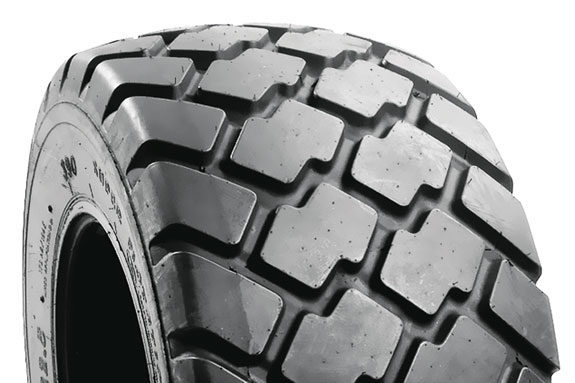All-steel radial flotation tires represent a new frontier in flotation tire technology – a tire designed to meet the demands of heavier equipment, heavier loads and longer hauls over paved roads while still minimizing soil compaction in the field.
The first all-steel flotation radial tire on the market is also the industry’s first farm flotation tire of its size to meet DOT certification requirements.
Capable of carrying nearly 11,000 pounds at speeds of up to 50 mph on highways, the new technology was engineered to meet the needs of farmers who have to haul manure, crops and materials long-distance – without a moment to waste.
All-steel construction demands a lot from a tire manufacturer – it’s a feat of material science and precision manufacturing techniques. But as this new technology emerges, it’s worth understanding what all-steel construction delivers and starting to consider how it could benefit your operation.
Bias vs. radials
The traditional farm tire is a bias-ply construction, built by layering rugged fabric whose main fibers run diagonally – on the bias – relative to the bead. The layers of fabric, or plies, alternate so the diagonal fibers are oriented across each other. The result is a sturdy, stiff, relatively low-cost tire.
Radial tires are built with plies that run perpendicular to the bead. Heavy belts wrap around the center body of the tire under the tread to provide support and puncture resistance.
Up until now, plies in flotation radials have been constructed of tough nylon or polyester fabric and reinforced by fabric or steel belts. With all-steel tires, the belts and the plies are made of steel.
Radial tires have more flexible sidewalls than bias-ply tires do. As a result, the radial tire will deflect more than a bias-ply tire under the same load. Consequently, the footprint of the tire is significantly larger and flatter than that of a comparably sized bias-ply tire.
The result is better traction, more flotation, less compaction – because the load is spread out over more square inches of area – and more effective delivery of the tractor’s horsepower to the ground surface.
Also, radial tires can often carry more load at higher speeds because radial design allows greater air volume than a bias tire of the same size.
Less heat buildup
Tires can generate tremendous heat through friction. Watch a tire as it rolls. The sidewall directly under the axle bends under the load; tread lugs flex to bite into the soil or grip the road.
The compressed portion then rotates behind the axle and begins to decompress as the next portion of the tire starts to bend under the weight of the vehicle. The bending and flexing of the tire, called flexion, creates friction.
In turn, the friction causes heat, and rubber – which is an outstanding insulator – traps the heat quite effectively rather than conducting it to the outside of the tire to dissipate.
(This flexing phenomenon explains why underinflated tires are more prone to overheating and failure – with less air to help support the sidewall, there’s more flexing than usual.)
Bias-ply tires tend to heat up the most, because the oppositely oriented plies rub against each other as the sidewall flexes, creating more friction.
By contrast, an all-steel tire has a single, very strong body ply. Heat generation is minimized because there is no friction from multiple layers rubbing against each other. The steel body ply is also inherently resistant to the heat buildup that occurs in the rubber under high speeds and flexing under heavy loads.
Further, the strength of steel belts keeps the footprint of all-steel radials flatter, eliminating issues that can cause compaction and excessive wear.
Also, because the plies are diagonal in bias-ply tires, the tire cannot flex significantly to envelop foreign objects, which can lead to tire punctures and breaks. The high tensile strength of steel construction makes all-steel radials more resistant to damage from rocks and other obstacles, giving the tires more enveloping power and puncture resistance.
Technological marvel
An all-steel flotation tire is a technological marvel. It combines the best elements of agricultural flotation tires, radial off-the-road (OTR) tires and all-steel truck tires.
Of course, challenges in building a tire are multiplied when you’re talking about creating a 300-pound object that’s four feet tall and nearly as wide. Precisely managing heavy steel plies and belts during the tire-building and molding processes is both art and science.
So is developing the exact blend of ingredients for an all-steel radial flotation tire. Rubber and steel are materials that, in their natural states, are not compatible.
Manufacturers have to plate their steel fibers with other materials that adhere well to both rubber and steel, and to create a rubber compound (blend) of the proper consistency to adhere to the steel wire. Doing that requires expertise and experience on the molecular level as well as on the level measured in tons of material in a batch.
A flotation tire is constructed of dozens of layers, from the inner liner to the plies, belts, bead wires and tread. Each of those components is engineered with its own special blends of rubber compounds and adhesives, wound together and fused in a mold under heat and pressure.
Every one of the dozens of materials in a tire is carefully chosen and manufactured to work in harmony with the rest of the tire.
The tread design also needs to complement the material’s engineering. Tractor-type lugs are poorly suited for high-speed transport – they flex and squirm on hard surfaces.
Instead, we designed our first all-steel radial with a block tread that gives good traction and a broad, stable patch of rubber in the field, improving flotation and reducing compaction. The broad blocks also provide a smooth ride and good traction.
Investing in an all-steel flotation tire may not fit every operation. But those dairy producers that need to run farther, faster and heavier – especially over public highways – may find tire technology is catching up to their needs, and even helping them raise the bar on productivity.





